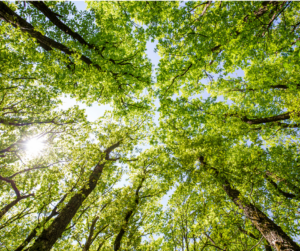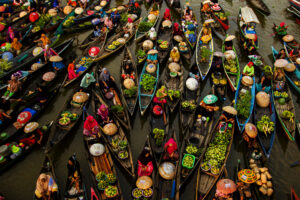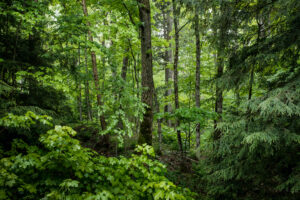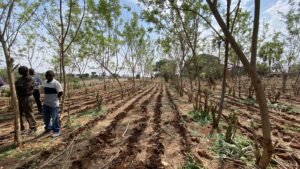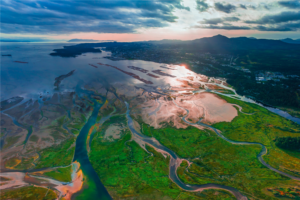“The future I want for clothing production”
Red water, droughts, and fast fashion – Dr Jenny Grönwall reflects on her recent field trip to Tiruppur, India, and the way forward for a thirsty textile industry.
At the beginning of February, I returned from India after the last round of fieldwork for the sustainable textiles research project I’ve been involved in since 2015. From my social scientist perspective, this project has made me understand much more about the detrimental and complex impacts that especially the dyeing of textiles has on water, and the possibilities to control them.

During the trip I held an inspirational talk for 250 students at a secondary school in Tiruppur. In the picture, which was taken during that talk, I’m pointing to the shirt I’m wearing. I bought this in 2004 and I’ve been altering, mending and loving it since. No ‘fast fashion’ items were added to my wardrobe last year. When people across the world are increasingly affected by water crises, manufacturing of clothes doesn’t seem as the best way to spend scarce, shared resources. And so, I tried to send this young audience the signal that I think we should all buy less, look for quality that lasts, and promote second-hand stores and recycling solutions.
And that’s where the Tiruppur region comes more into focus. It received good rains in the fall of 2017 after experiencing the worst drought in 142 years, but many are already nervous that with summer around the corner, the south-west monsoon will fail again. And that the water supply to the households will take the hit, while business-as-usual applies to the thirsty textile industry. I have interviewed enough farmers, villagers, slum dwellers and trade representatives during my field work to conclude that the industry gets the water it needs, irrespectively. On average some 20 million litres daily from the river, not counting all the groundwater trucked to factories—whether legal or not.
But I also know how important the jobs are to everyone. Therefore, the next step for this region to become water wise involves looking beyond the zero liquid discharge treatment and recycling approach, to waterless dyeing methods. What if our T-shirts and leggings can be made in all the colours of the rainbow without consuming so much freshwater, without polluting streams and aquifers? We need to make our voices heard: this is the future we want for clothing production!
I’m looking forward to the day when all households around Tiruppur know that the groundwater they’re relying on is safe to drink again. When the water given to cows and used to irrigate their fodder is no longer red as it comes out of wells and boreholes. It will be the day that pumping industry wastewater into the ground or sending it to open fields has become a thing of the past in every corner of this region.

